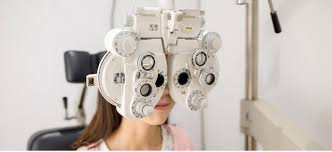You never see it coming. One minute, life moves along as usual, and the next, a health crisis hits out of nowhere. Whether it’s a serious injury, an unexpected diagnosis, or a sudden hospital stay, medical emergencies don’t just affect your body. They can have a serious impact on your wallet, too.
The financial side of a medical emergency is something most people don’t think about until they’re already in the thick of it. But those bills add up fast. It’s not just the medical care itself. It’s the time you take off work, the medications, the follow-up appointments, the rehab, or the extra help you might need at home. If you’re uninsured or underinsured, the financial toll can be even more stressful than the recovery process.
That’s why being prepared matters, not just for your health but for your money. You don’t need to panic or plan for every possible “what if,” but taking a few proactive steps can go a long way in protecting yourself from financial fallout.
The Real Costs Behind a Medical Emergency
When you think of a health emergency, your first thought might be the hospital bill. But in reality, the costs go far beyond that. Let’s say you’re in an accident and need surgery. That may mean a night (or several) in the hospital, follow-up visits, physical therapy, prescriptions, and weeks or even months off work. If you’re self-employed or don’t have a generous sick leave policy, that missed income can be a major blow.
Now, add in something that’s often overlooked: liability. What if someone else was injured in the same incident, and you were held responsible? Your standard auto or home insurance might only cover so much. That’s where extra protection becomes essential.
You may be wondering, what is umbrella insurance? Could it actually help in a situation like this? Umbrella insurance provides extra liability protection that goes beyond the limits of your standard policies, such as auto or homeowners insurance. In the context of a medical emergency, this extra layer of protection could cover legal fees, medical bills for others involved, or damages if you’re found at fault in an accident. It’s one of those safeguards that many people don’t consider until they really need it.
Financial preparation isn’t just about budgeting or saving. It’s also about knowing what types of protection you have and what’s missing.
Why Health Insurance Alone Isn’t Always Enough
Having health insurance is a great start, but it doesn’t always mean you’re fully protected from the financial impact of a health crisis. Most policies have deductibles, co-pays, and out-of-pocket maximums that can still leave you with thousands of dollars in bills. And if your policy doesn’t cover certain treatments, providers, or medications, you’re on the hook for those expenses, too.
In more severe cases, you may even hit your policy’s annual or lifetime limits, depending on your plan. That’s when people start tapping into savings, using credit cards, or taking out loans, none of which are ideal during a health emergency.
It’s important to review your policy details before you ever need to use them. That way, you’re not caught off guard by what is or isn’t covered when things go wrong.
Common Financial Setbacks Caused by Health Emergencies
It’s not just the direct medical costs that can cause financial stress. A serious illness or injury can lead to a domino effect of other setbacks. You might have to take unpaid leave or even quit your job. A partner may need to take time off to care for you. In some cases, families are forced to dip into retirement accounts or emergency funds to stay afloat.
These situations aren’t rare. Many Americans face medical debt not because they’re reckless but because they weren’t prepared for how expensive recovery could be. Even short-term disruptions can have long-term effects: missed bills, damaged credit, and delayed financial goals like buying a home or saving for college.
How to Build a Financial Safety Net Before a Crisis Happens
The best time to prepare for an emergency is before one happens. That might sound obvious, but too many people put it off because it feels overwhelming. The good news is that you don’t need to do everything at once. Small steps add up.
Start by creating an emergency fund. Aim for at least three to six months of essential living expenses. It doesn’t have to happen overnight, but even a few hundred dollars set aside can be a lifeline when something unexpected comes up.
Next, make sure you understand your health insurance. Know what’s covered, what your deductible is, and what your out-of-pocket maximum looks like. If your employer offers other types of insurance, like disability or supplemental health coverage, take time to understand those, too.
You might also want to look into additional coverage options that go beyond medical costs, like umbrella insurance or long-term care insurance. These can provide peace of mind by covering expenses that traditional policies might miss.
And don’t forget about your legal documents. Having a medical power of attorney or living will in place can make decision-making easier during a crisis and reduce confusion or stress for your loved ones.
Practical Steps to Take if You’re Facing a Medical Emergency Now
If you’re already in the middle of a health crisis, don’t panic, but do take action. Start by reviewing every bill you receive. Medical billing errors are surprisingly common, so double-check charges and ask for itemized statements.
If the total feels overwhelming, reach out to the billing department. Many hospitals and clinics offer payment plans, financial assistance programs, or even discounts for paying in cash. The key is to communicate early and often rather than ignoring the issue and letting it turn into a collections problem.
Also, look into any short-term disability benefits you may be eligible for or public programs that can offer support. In some cases, nonprofit organizations may help with certain medical or living costs.
If things feel complicated, don’t hesitate to talk to a financial advisor or a patient advocate. They can help you navigate the process and find solutions that ease your financial burden.
Facing a medical emergency is never easy, but being financially prepared can take a huge weight off your shoulders. It’s not about living in fear of what might happen. It’s about setting yourself up to handle life’s curveballs without going into panic mode.
Think of preparation as a form of self-care. When you create a safety net, you’re not just protecting your wallet. You’re protecting your peace of mind. Start small: review your insurance, build an emergency fund, and explore coverage that fills in the gaps. These steps may not feel urgent now, but they could make all the difference when life doesn’t go as planned.
And remember, you don’t have to do it all at once. Just start. Because when the unexpected happens, you’ll be glad you did.








Leave a Reply